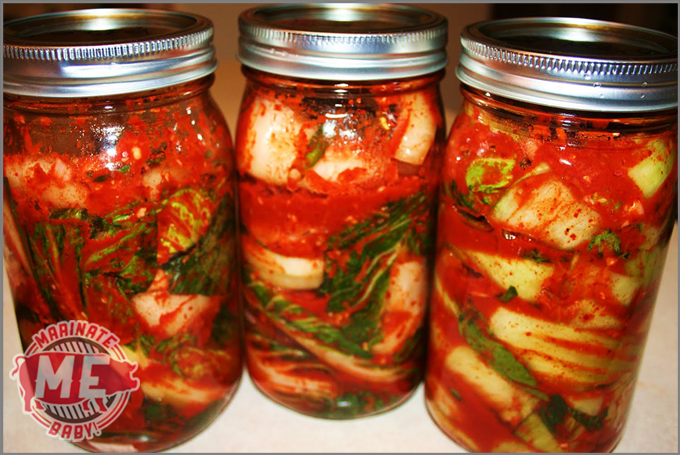I have a confession. I love Kimchi. Honestly, I love Korean food in general. There are several times in a person’s life, as I like to call it, a culinary awakening. Discovering foods, that awake your palate and make that meal memorable, are just that type an experience.
The first time I had this, was at a Korean BBQ place in Salt Lake City, UT. I approached the item with some suspicion. I smelled it, and it had a wafting smell of spices and salt. I then put some with some Bulgogi (Korean BBQ Meat) and rice, and I couldn’t get enough of this.
Now, when I go to eat I request more of this than what is traditionally given to a 백인 or baeg-in (literally means “white people”), I get some strange looks or even comments like, “Are you sure?” or “You need to eat it all if I bring it.” When they come to collect the plates, it is always gone and I get the approving smile.
Ever since my love affair with Kimchi started, I have wanted to stop buying it at the local mega-mart and come up with an easy to follow, easy to prepare recipe that wouldn’t take months, years to create. I like to think that Kimchi is a sister-cousin to the German Sauerkraut. I love them both, however if truth had to be told Kimchi can replace Sauerkraut in almost every application.
This is full of flavor, so if you’re in for a culinary awaking of your own try this amazing recipe!

Kimchi
Ingredients
- 1 lb Napa Cabbage or Bok Choy
- 1 Small Daikon Radish
- 1 Carrot
- 1 Small Onion
- 1/2 Fresh Ginger 1/2-inch finger
- 4 cloves garlic
- 1 tablespoon Fish Sauce
- 2 Taplespoon Korean Hot Pepper Singsong brand
- 4 Tablespoons Kosher Salt
- 6 Cups Water bottled or filtered water
Instructions
- Make a Brine by combining the salt and the 6 cups of water in a medium-large food safe bucket. Stir until the salt has completely dissolved.
- In a colander, wash (tap water) and dry all of the vegetables. Slice the the cabbage into bite size chunks. Julienne or grate the carrot, radish and ginger. Quarter the onion.
- In a very large bowl, add the cabbage, carrot, radish and ginger and cover with the brine mixture. Place a plate on top to help keep the vegetables submerged. Let this brine for at least 2 hours.
- In a food processor place the garlic, onion, fish sauce, and pepper and pulse to combine. Add a little bit of the brine mixture as needed until the mixture forms a think paste. Cover with plastic wrap and place in the refrigerator until the vegetables have completed their 2 hours in the brine.
- Once the brine is complete, taste the cabbage. The texture of the cabbage should have softened a bit, however some of the crunch should still be present. The taste should be pleasantly salty, like the taste of ocean water. You can adjust the seasoning at this point by letting the cabbage sit for an additional hour in the brine, or if you think it's too salty you can rinse the cabbage.
- Drain your vegetables and reserve the brining liquid.
- While wearing food safe gloves, in a large bowl add the chile paste to the vegetables and combine until completely combined.
- In a quart sized jar or pickling container, pack the Kimchi mixture tightly. Tamp down the vegetables to remove any air bubbles, make sure to leave at least 1 1/2 inches of space at the top of the jar.
- Add enough of the reserved brine mixture to cover the Kimchi and still leaving that same 1 1/2 inch of space to allow for expansion during fermentation.
- If you do not use an airlock system, seal the jar loosely to let the air escape. If you are using an airlock system, seal the jar tightly, insert the airlock and add water to the fill line.
- Let the Kimchi mixture sit for one or two days, in a dark place at about room temperature. You might see some bubbles forming int he jar or bubbling through the airlock system, this is a good thing. Taste the Kimchi at this point and see how it is progressing. At this point the taste should be a bit hot or a tangy taste. The flavor will get progressively stronger as it sits, so once the flavor is where you would like it. Remove the airlock system, and seal the jar and place it in the refrigerator.
- Recommended: Let the Kimchi sit in the refrigerator for a week. This will mellow out the flavors a little bit. This recipe will keep in the refrigerator for weeks.

